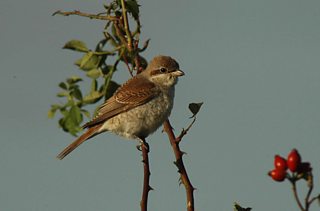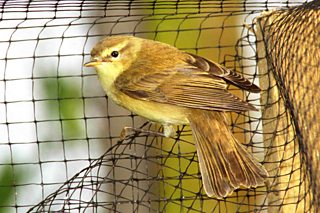Paul Stancliffe from the looks at the migration of birds on the UK during September.
As September trundles along the urgency amongst birds to get moving grows and, in the right conditions large numbers will be heading out of the country. The ‘right’ conditions for the birds will be light winds, preferably from the north, however, a light southerly can be just as good. Birds will move in large numbers into a headwind; presumably a bird has a bit more control when flying into a light wind than when it is being taken along by a wind from behind.

Red-backed Shrike, Neil Calbrade/BTO
With so many birds on the move it is no wonder that birdwatchers are out in the hope that something unusual might be moving with the common migrants – of course the weather has a lot to do with what might turn up and the ideal conditions occur when there is high-pressure on the near continent and in the North Sea. In these conditions birds on the continent will be on the move in force, with some being drifted out into the North Sea. At times like this relatively large numbers of these drifting migrants can be found in Britain. Birds like Red-backed Shrike, Wryneck and Barred Warbler that breed to the east of us and that would ordinarily be making their way to Africa through the European mainland. With the wind forecast to drift from west to east for the next few days we can look forward to some of these birds turning up.

Willow Warbler, Dick Jeeves/BTO
As and when the winds drop during the next week many of our summer visitors will head off. Now is a great time to be on the lookout for Yellow Wagtails, Whinchats, Redstarts, Willow Warblers and Swallows and House Martins.
With birds drifting across the North Sea we could also see the arrival of birds from the continent that are heading here for the winter; Redwings, Fieldfares, Robins and Goldcrests are all on the cards.

Siskin, Edmund Fellowes/BTO
For the latter species this is an awesome feat, the average weight of a Goldcrest is around five grammes; that this waif can make the four-hundred miles, or so, sea crossing under its own steam is amazing. Whilst the coast is the best place to be, birds can and will be on the move anywhere, so now is also a great time to look out for odd birds in the garden. Siskins have been turning up in large numbers in gardens around the BTO’s headquarters in Thetford, Norfolk.
There'll be more migration updates from Paul and the BTO in the coming weeks. Let us know if you've noticed any migration in your area by using the comments below.
